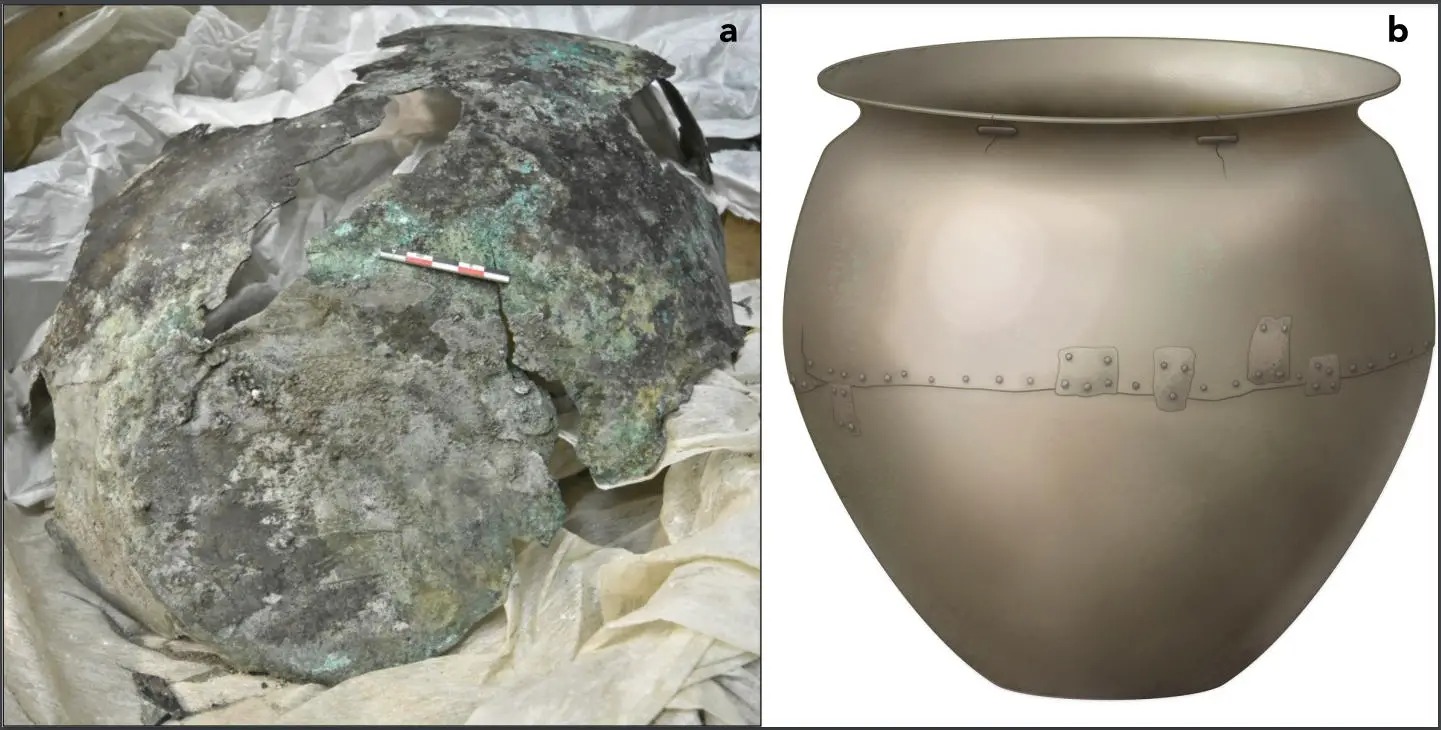
In the past, experts guessed how old tools were used by looking at old writings and hints around them. However, when it came to what people ate a long time ago, they had to make educated guesses about food and how it was prepared.
A recent study shared in the journal iScience has brought fresh insights. Researchers took a closer look at protein remains in ancient cooking pots. They found out that in the Maykop period (from 3700 to 2900 BCE), the people living in the Caucasus region ate animals such as deer, sheep, goats, and cows.
“It’s really exciting to get an idea of what people were making in these cauldrons so long ago,” says Shevan Wilkin of the University of Zurich. “This is the first evidence we have of preserved proteins of a feast—it’s a big cauldron. They were obviously making large meals, not just for individual families.”
Proteins have been well preserved on cauldrons
For a while now, scientists have been aware that the fat residues left behind in ancient pottery and the proteins found in dental calculus, the tough mineral buildup on teeth, offer insight into what people consumed in the past.
What’s new is that this study brings together protein analysis and archaeological study to uncover precise information about the dishes prepared in these specific containers.
Certain metals have unique properties that fight against microbes, and this is why the proteins have been so well-preserved on the cauldrons.
1/ During the Bronze Age, cooking was typically done in ceramic pots. However, in the Late Bronze Age, a new cooking vessel was introduced: the cauldron.
Cauldrons were made by riveting together sheets of bronze to form a rounded cone#Life_in_Bronze_Age_Ireland #Archaeology pic.twitter.com/lbNsHGgz7p— Charles Mount (@cmount1) May 24, 2023
The usual microbes in the soil that tend to break down proteins on surfaces like ceramics and stones are kept in check on these metal alloys.
We’ve already come to the conclusion that people during that era probably enjoyed a type of soupy beer, but the specifics of the main meals remained a mystery, according to Viktor Trifonov from the Institute for the History of Material Culture.
Seven cauldrons recovered from the Caucasus region
The team of researchers gathered eight samples of leftover materials from seven cauldrons that were found in burial sites within the Caucasus region.
This region stretches between the Caspian and Black Seas, covering areas from Southwestern Russia to Turkey and including countries such as Georgia, Azerbaijan, and Armenia.
Through their efforts, they successfully extracted proteins from sources like blood, muscle tissue, and milk.
Among these proteins, one called heat shock protein beta-1 points to the fact that these cauldrons were utilized for cooking deer or bovine meats, including cow, yak, and water buffalo.
Furthermore, milk proteins from either sheep or goats were also detected, indicating that these cauldrons were used for preparing dairy-based dishes as well.
See all the latest news from Greece and the world at Greekreporter.com. Contact our newsroom to report an update or send your story, photos and videos. Follow GR on Google News and subscribe here to our daily email!



